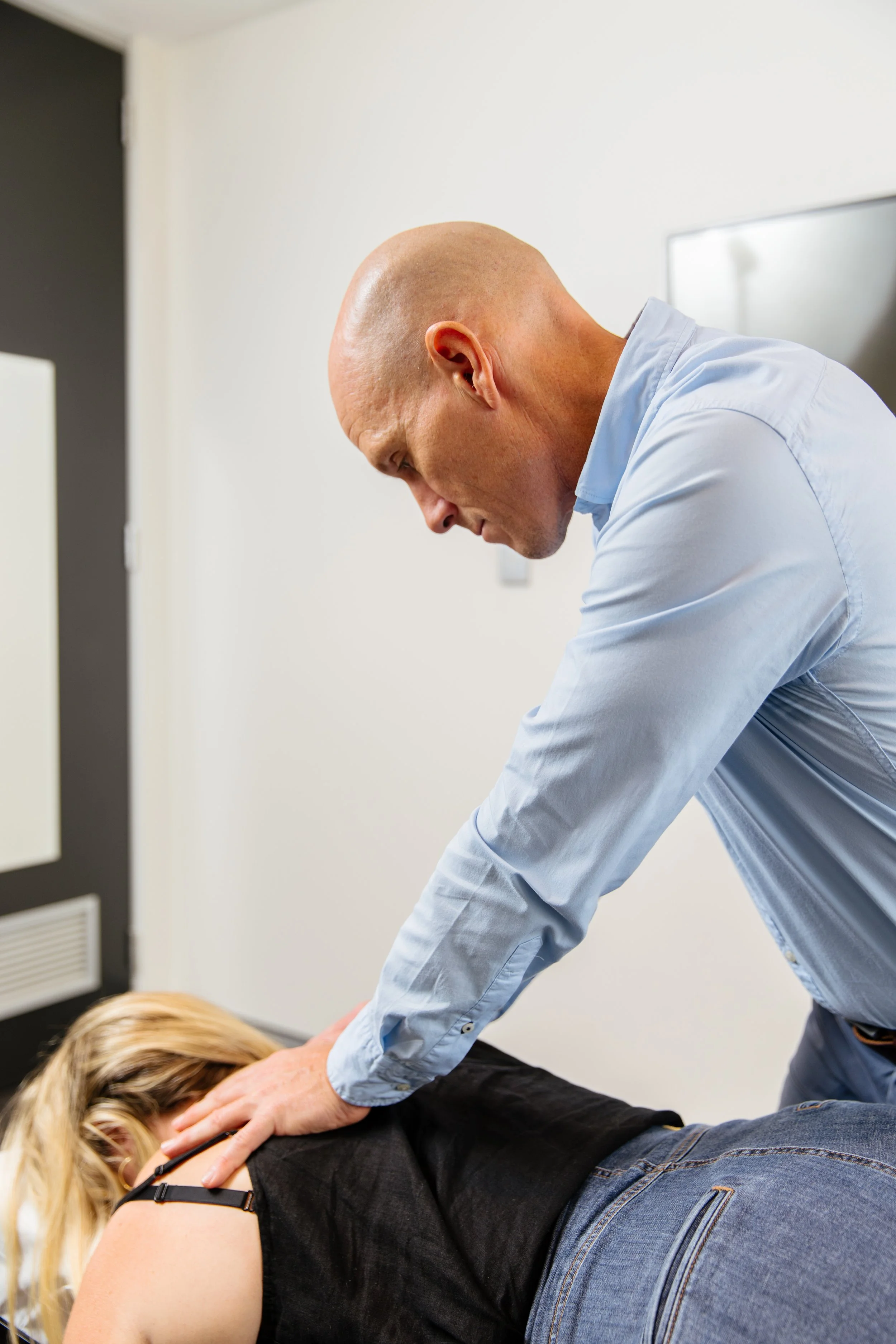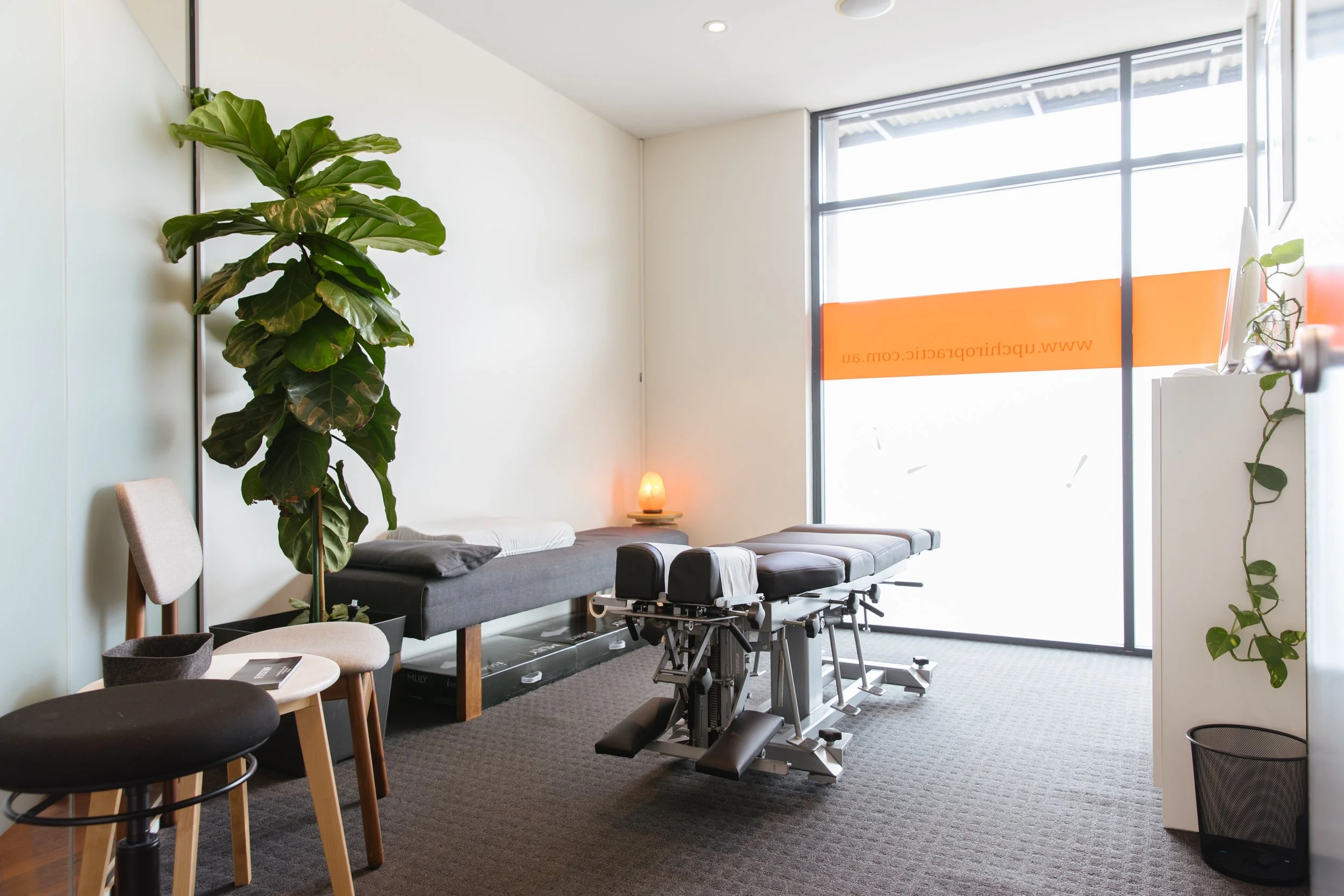Why Back Pain Doesn't Work Like A Headache Tablet
One Visit vs. Multiple Visits:
"Can't you just fix me in one visit?"
We hear this question all the time...and we get it, we really do.
You're in pain, you want it gone NOW, and you're thinking “why can't the chiropractor just click something back into place and send me on my way?”
Sound familiar?
Here's the thing...I wish it worked like that! I really do. If I could wave a magic wand and have you walk out pain-free after one visit and never need to come back, that would be amazing.
But that's not how the body works...and understanding WHY is actually really important for your recovery.
The Headache Tablet Mentality:
We live in a world of quick fixes.
Headache? Take a tablet. Pain gone in 20 minutes.
Indigestion? Pop an antacid. Relief in minutes.
So it makes sense that when you come in with back pain, you're expecting the same thing - quick fix, instant relief, done and dusted.
But here's what's happening when you take that headache tablet...you're masking the symptom. The pain signal is being blocked, but nothing has actually been fixed or healed. And that's okay for a headache that's caused by dehydration or stress or too much screen time.
But musculoskeletal problems? They don't work the same way.
What's Actually Going On With Your Back Pain…
Let me paint you a picture...
That back pain you've got? It didn't just show up yesterday (even if that's when you first noticed it).
Your body has been compensating for weeks, months, maybe even years. Maybe you sit at a desk all day. Maybe you've been lifting incorrectly. Maybe you had an injury years ago that never quite healed properly. Maybe you've been stressed and your muscles have been tense for so long they don't remember how to relax.
All of this creates patterns...
Your muscles learn to hold tension. Your joints become restricted. Your nervous system adapts to dysfunction. Your movement patterns change to avoid pain.
You see, by the time you're in enough pain to actually come see us, there's usually a whole lot more going on than just "something out of place."
The Tissue Healing Timeline
Here's something most people don't know...tissues have a healing timeline, and we can't speed it up no matter how much we want to.
Acute soft tissue injuries (muscles, ligaments, tendons) take approximately 6-8 weeks to heal. That's just physiology. We can support the healing process, we can reduce pain and inflammation, we can improve function...but we can't make tissues heal faster than they're capable of healing.
Chronic pain is even more complex because now we're not just dealing with tissue damage...we're dealing with neuroplastic changes. Your nervous system has learned the pain pattern. Your brain has created pain pathways that fire even when the original injury has healed.
This is why chronic pain doesn't respond to a "quick fix" - because it's not just about the tissues anymore, it's about retraining your nervous system.
What Actually Happens In Your First Adjustment Visit…
So when you come in for that first adjustment, here's what we’re doing...
We are not "fixing" you. We’re starting a process.
We’re assessing what's going on, finding the areas of dysfunction, beginning to restore movement and reduce pain, and most importantly, we are starting to interrupt those dysfunctional patterns your body has learned.
That first adjustment? It's like waking up muscles and joints that have been asleep. It's like sending a message to your nervous system that says "hey, we can move differently, we can function better."
And yes, you might feel better after that first visit! Many people do. But feeling better and being healed are two different things.
The Reality Of Recovery
Here's what the research shows us...
For acute lower back pain, most people need somewhere between 4-12 visits over 2-6 weeks to achieve significant improvement and return to normal function.
For chronic conditions? It can take longer because we're not just dealing with tissue healing...we're retraining movement patterns, rebuilding strength and stability, and reprogramming neurological patterns that have been there for months or years.
Now I'm not saying you need to come see us forever! What we’re saying is that recovery is a process, and that process takes time.
Why Multiple Visits Matter
Think about it like this...
If you wanted to get fit, would you go to the gym once and expect to be in shape?
No! You'd go consistently, multiple times per week, for weeks and months. You'd progressively build strength and endurance. You'd create new habits and patterns.
Recovery from musculoskeletal dysfunction works the same way.
Each visit builds on the last one. We're progressively restoring function, reducing pain, improving movement, and most importantly - teaching your body new, healthier patterns.
Visit 1-6: We're focusing on pain relief and restoring basic movement. You might feel better, but the underlying dysfunction is still there.
Visit 6-12: We're starting to see real changes. Movement is improving, pain is reducing more consistently, and those dysfunctional patterns are being interrupted.
Visit 13+: Now we're focusing on stability, strength, and prevention. We're making sure those old patterns don't come back.
The "I Feel Better So I'm Done" Trap
Here's where a lot of people go wrong...
They come in, we get their pain under control after 5-6 visits, they feel great, and they stop coming.
Then what happens?
A few weeks or months later, the pain comes back. Often worse than before.
Why? Because we never finished the job. We got rid of the symptom (pain) but we didn't address the underlying dysfunction. Those old patterns were still there, just waiting to return.
You see, pain is the last thing to show up and the first thing to go. Just because the pain is gone doesn't mean the problem is fixed.
What About Ongoing Care?
Now, we’re not talking about coming to see us ongoing for the sake of it...
But here's what we want you to understand - your spine and nervous system need maintenance just like your teeth, your car, your house.
You don't wait until you have a cavity to see the dentist, right? You go for regular check-ups to catch problems early.
The same principle applies to spinal health. Regular maintenance care can help you avoid those major flare-ups and keep your body functioning optimally.
But that's a conversation we have once you're out of pain and back to normal function. First things first, let's get you better!
The Reality
Look, we could tell you what you want to hear - "sure, we can fix you in one visit!"
But that wouldn't be honest, and it wouldn't serve you.
What we can tell you is this...
We will work with you to create a care plan that's based on evidence, that's appropriate for your specific condition, and that's designed to get you the best results in the most efficient time frame.
We will be honest with you about what to expect, how long it might take, and what you need to do to support your recovery.
And if at any point we don't think we are the right practice to help you, or if you're not progressing as expected, we will tell you that too and help you find the right solution.
What You Can Do To Speed Up Recovery
Here's the good news - while we can't speed up tissue healing, you can support the process:
Follow your home care recommendations - exercises, stretches, ergonomic changes
Stay active within your pain tolerance - movement is medicine
Manage stress - stress increases muscle tension and slows healing
Sleep well - this is when your body does most of its healing
Stay hydrated and eat well - your body needs fuel to heal
Be consistent with your care plan - sporadic care = sporadic results, each adjustment you receive is crucial to get the result we are both after
The patients who get the best results are the ones who are active participants in their recovery...not passive recipients of treatment.
The Bottom Line
Can we help you feel better in one visit? Sometimes, yes.
Can we fix the underlying problem in one visit? No...and anyone who tells you they can is either lying or doesn't understand how the body works.
Recovery is a process. Healing takes time. Real, lasting change requires consistency.
But here's what we can promise you...
We will be honest about what you need, we will work with you to create a realistic plan, and we will do everything we can to help you get better as efficiently as possible.
Because at the end of the day, our goal is to get you functioning optimally so you can get back to living your life without pain holding you back.
You deserve care that works, not just quick fixes that don't last.
Ready to start your recovery journey? Book a consultation and let's create a realistic care plan based on your specific needs.
References:
Artus M, van der Windt D, Jordan KP, Croft PR. The clinical course of low back pain: a meta-analysis comparing outcomes in randomised clinical trials (RCTs) and observational studies. BMC Musculoskelet Disord. 2014 Mar 7;15:68. doi: 10.1186/1471-2474-15-68. PMID: 24607083; PMCID: PMC4007531.
Hestbaek L, Leboeuf-Yde C, Manniche C. Low back pain: what is the long-term course? A review of studies of general patient populations. Eur Spine J. 2003 Apr;12(2):149-65. doi: 10.1007/s00586-002-0508-5. Epub 2003 Jan 28. PMID: 12709853; PMCID: PMC3784852.
BMJ 2009; 339 doi: https://doi.org/10.1136/bmj.b3829 Prognosis for patients with chronic low back pain: inception cohort study
BMJ 2008; 337 doi: https://doi.org/10.1136/bmj.a171 Prognosis in patients with recent onset low back pain in Australian primary care: inception cohort study
European Journal of Pain, Volume 13, Issue 1, 2009 Mark J. Hancock, Christopher G. Maher, Jane Latimer, Rob D. Herbert, James H. McAuley. Can rate of recovery be predicted in patients with acute low back pain? Development of a clinical prediction rule. https://pubmed.ncbi.nlm.nih.gov/18448369/





